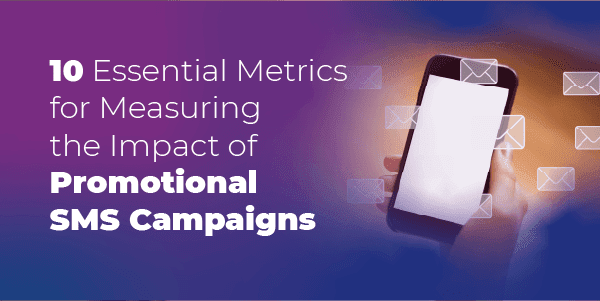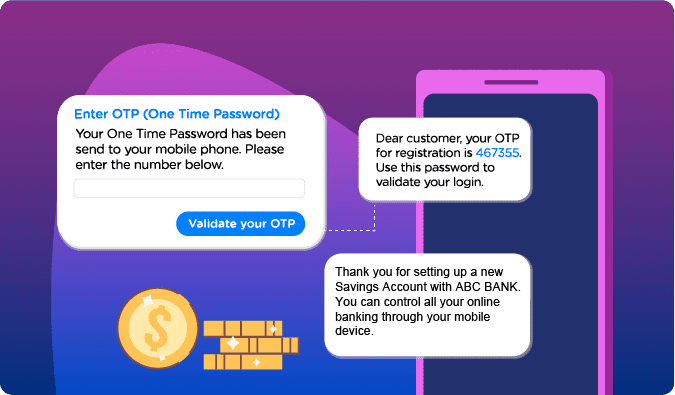The world of digital communication is vast and ever-expanding, and Application-to-Person (A2P) messaging plays a crucial role in bridging the gap between businesses and individuals. It’s vital to comprehend the complexities, possibilities, and obstacles within this dynamic market. Let’s explore the exciting forecast, trends, and ecosystem of the A2P messaging landscape in 2024.
Summary:
Forecast & Growth Trajectory
The A2P messaging market is on a trajectory of substantial expansion. Projections indicate a significant surge from USD 68.3 billion in 2023 to USD 78.2 billion by 2028, showcasing a Compound Annual Growth Rate (CAGR) of 2.8% during the forecast period. This growth is propelled by the massive penetration of mobile devices worldwide and the rising demand for secure, instantaneous communication channels.
The market’s growth is fueled by a few important things. First, more people are using smartphones, and the internet has changed how businesses talk to customers. A2P messaging lets businesses send quick messages directly to people, like reminders, deals, and updates about their purchases.
Also, because of COVID-19, many businesses have had to change how they work. They’re doing more things online and need better ways to talk to customers. So, they’re using A2P messaging more to keep in touch with customers, employees, and other important people. This higher demand for A2P messaging is making the market grow even faster.
Attractive Opportunities Abound
Emerging economies, particularly in the Asia Pacific region, offer ample opportunities for growth across various industry verticals. The increasing number of mobile subscribers, along with a strong focus on enhancing customer experience, is driving innovation and expanding the market. Moreover, the current landscape is favorable for strategic mergers and acquisitions, creating lucrative prospects for market players who want to consolidate their presence.
In the Asia Pacific region, countries such as India and China have large populations with increasing smartphone usage rates. This promising demographic, combined with the fast adoption of digital services, presents significant opportunities for A2P messaging providers. Businesses operating in sectors such as retail, banking, and healthcare are utilizing A2P messaging to connect and interact with customers in these growing markets.
Furthermore, the rise of mobile commerce (m-commerce) and the proliferation of mobile banking services contribute to the growth of the A2P messaging market in the Asia Pacific region. As consumers increasingly conduct financial transactions and make purchases via mobile devices, businesses recognize the importance of A2P messaging in delivering transactional alerts, account notifications, and promotional offers to their customers.
Dynamics Driving Growth
 eCommerce Boom:
eCommerce Boom:
The rapid growth of eCommerce has led to an increase in the adoption of A2P messaging. Businesses use A2P messaging to enhance sales and improve customer engagement. A2P messaging channels allow companies to deliver customized promotions and incentives, which can improve consumer interactions and increase conversions, ultimately improving the bottom line for businesses.
The eCommerce industry is constantly evolving, and consumers are increasingly turning to online shopping. A2P messaging plays a critical role in this landscape, enabling businesses to communicate order confirmations, delivery updates, and customer support interactions. By utilizing A2P messaging, eCommerce companies can provide personalized and timely communication, ultimately enhancing the overall shopping experience for their customers.
 Regulatory Hurdles:
Regulatory Hurdles:
In the present day, the government has imposed strict regulations on businesses which are posing significant challenges to market players. These regulations require compliance with stringent data protection laws such as GDPR and TCPA. It is important for industry players to navigate this regulatory landscape with a nuanced approach to ensure adherence while optimizing operational efficiency. Organizations operating in the A2P messaging space must stay informed of evolving regulations to mitigate risks and maintain regulatory compliance.
In recent years, regulatory frameworks governing data privacy and consumer protection have become increasingly stringent. These regulations are essential to safeguard customer data and preserve trust. Organizations must comply with these regulations to avoid significant financial penalties and reputational damage. Hence, it is imperative to implement robust compliance measures within the industry.
 Revenue Generation Opportunities:
Revenue Generation Opportunities:
The increasing adoption of A2P SMS by Over-the-Top (OTT) players presents lucrative revenue opportunities for Mobile Network Operators (MNOs). Enterprises across various sectors embrace A2P messaging for verification and notification alerts, driving up demand for A2P SMS services. MNOs can capitalize on this trend by offering robust A2P messaging solutions, thereby expanding their revenue streams and reinforcing their market position.
MNOs play a crucial role in the A2P messaging ecosystem, providing the infrastructure and connectivity necessary for A2P message delivery. As the volume of A2P messaging traffic grows, MNOs stand to benefit from increased revenue streams derived from A2P SMS services. By offering value-added services such as message filtering, analytics, and reporting, MNOs can enhance the overall A2P messaging experience for businesses and consumers alike.
 Monetization Challenges:
Monetization Challenges:
Despite the potential for A2P messaging revenue, operators encounter challenges in maximizing monetization due to visibility and control limitations. Implementing comprehensive SMS firewall solutions is imperative to safeguard messaging traffic and unlock untapped revenue streams. By proactively addressing security concerns and optimizing network infrastructure, operators can enhance the monetization potential of A2P messaging services.
A key challenge facing operators in the A2P messaging market is the effective monetization of messaging traffic. While A2P messaging presents a significant revenue opportunity, operators must overcome various hurdles, including grey route traffic, spam messages, and revenue leakage. To address these challenges, operators deploy SMS firewall solutions that enable them to monitor and control A2P messaging traffic, ensuring compliance with regulations and maximizing revenue potential.
Ecosystem Insights
 Authentication:
Authentication:
Authentication services are becoming increasingly important in the application sector due to the growing threat of cybersecurity attacks. Businesses are prioritizing these services to secure communication channels and prevent fraudulent activities. The adoption of authentication services also improves data security, which in turn develops trust in A2P messaging platforms.
Authentication services play a vital role in ensuring the safety and security of A2P messaging transactions. By implementing strong authentication mechanisms, businesses can verify the identity of both senders and recipients, reducing the risk of unauthorized access and fraud. This, in turn, enhances the overall credibility and reliability of A2P messaging platforms, building consumer confidence and driving adoption across different industry verticals.
 Vertical Dominance:
Vertical Dominance:
The Banking, Financial Services, and Insurance (BFSI) sector emerge as frontrunners in vertical dominance within the A2P messaging market. Real-time transactional requirements, stringent security protocols, and regulatory compliance drive the adoption of A2P messaging solutions in BFSI. These solutions streamline operations, enhance customer experiences, and fortify data security within the financial services ecosystem.
The BFSI sector is a key adopter of A2P messaging solutions, leveraging them to facilitate secure and efficient communication with customers. A2P messaging enables banks, financial institutions, and insurance companies to deliver transactional alerts, account updates, and security notifications in real-time. By leveraging A2P messaging, BFSI organizations can enhance customer engagement, streamline operations, and ensure compliance with regulatory requirements.
 Service Component:
Service Component:
The services segment takes center stage, offering a plethora of solutions ranging from SMS to Multimedia Messaging Service (MMS). A2P messaging services facilitate seamless communication between businesses and consumers, enabling the delivery of critical information, notifications, and promotional messages. Widely embraced by enterprises and service providers, A2P messaging services play a pivotal role in driving customer engagement and fostering brand loyalty.
A2P messaging services encompass a wide range of offerings designed to meet the diverse communication needs of businesses. From transactional notifications to promotional campaigns, A2P messaging enables businesses to reach their target audience effectively. With the proliferation of mobile devices and the growing demand for instant communication, A2P messaging services have become indispensable tools for businesses seeking to engage with customers across multiple channels.
Regional Spotlight: Asia Pacific
The Asia Pacific region holds a significant market share in the A2P messaging industry and plays a crucial role as a market player. The growth of mobile subscribers, increasing eCommerce platforms, and technology advancements are some factors driving the adoption of A2P messaging services in APAC. With the expansion of mobile-first initiatives and infrastructural developments, APAC is well-positioned to drive growth and innovation in the A2P messaging market.
Several factors contribute to APAC’s dominance in the A2P messaging market. Firstly, the region is home to some of the world’s fastest-growing economies, including China, India, and Southeast Asian countries. These countries have large populations with increasing disposable incomes, which results in a growing demand for mobile services and digital communication tools.
Furthermore, the Asia Pacific region exhibits a strong mobile-first culture, with consumers relying heavily on smartphones for various daily activities, including communication, shopping, and banking. This widespread adoption of mobile technology creates a conducive environment for A2P messaging providers, who can leverage this trend to deliver targeted messages and promotional offers to consumers.
Additionally, governments across the Asia Pacific region are actively promoting digitalization and encouraging the adoption of mobile technologies. Initiatives aimed at expanding internet connectivity, improving digital infrastructure, and fostering innovation contribute to the growth of the A2P messaging market in APAC.
Conclusion: Embracing the Future of Digital Communication
The A2P messaging market is full of potential and growth opportunities. Businesses can unlock these benefits by innovating, navigating regulations, and leveraging regional differences. As technology and consumer preferences change, it’s important to be adaptable and forward-thinking to succeed in this dynamic landscape.
With strong growth predicted, businesses should take advantage of the transformative power of the A2P messaging market. By staying up-to-date with emerging trends, forming strategic partnerships, and complying with regulations, businesses can be at the forefront of the A2P messaging revolution. Effective communication, improved customer experiences, and streamlined operations can help shape the future of digital communication and drive sustainable growth in this landscape.
To recap, the A2P messaging market is a convergence of technological innovation, regulatory compliance, and consumer demand. Businesses must remain agile, adaptable, and customer-centric as they navigate this changing landscape. By embracing the opportunities presented by A2P messaging, businesses can improve their competitive advantage, drive revenue growth, and build lasting relationships with their customers in a world that’s increasingly digital.
This article is based on A2P messaging marketing report from marketsandmarkets.com


 eCommerce Boom:
eCommerce Boom: Regulatory Hurdles:
Regulatory Hurdles: Revenue Generation Opportunities:
Revenue Generation Opportunities:  Monetization Challenges:
Monetization Challenges: Authentication:
Authentication: Vertical Dominance:
Vertical Dominance: Service Component:
Service Component:









